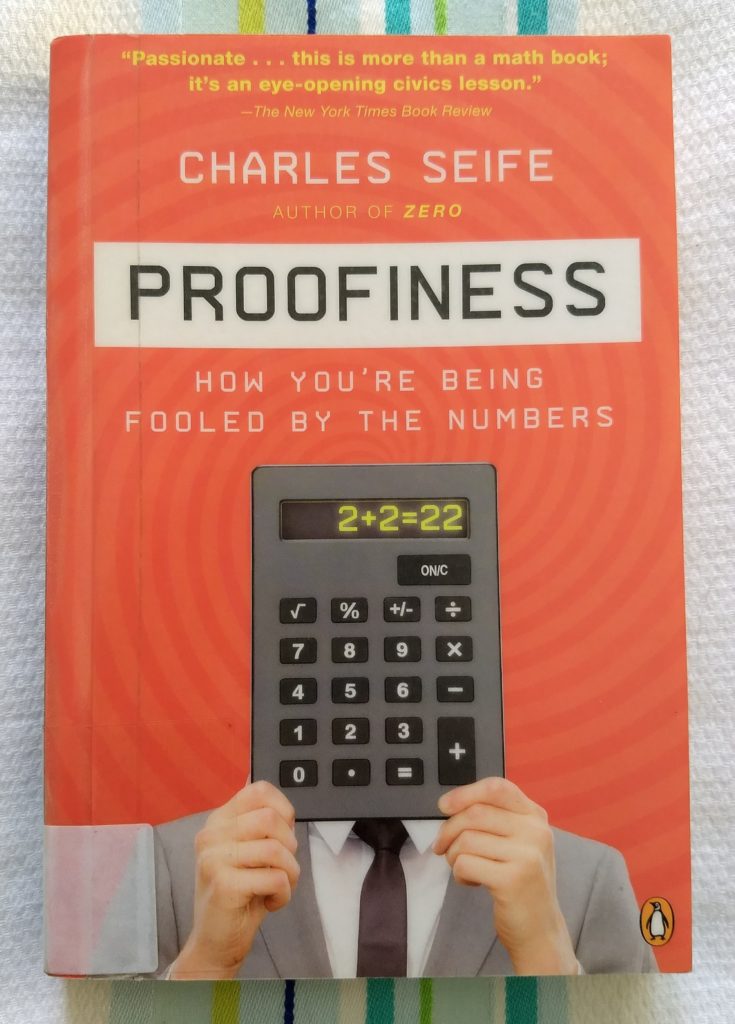 This is a great survey of all the ways to lie with statistics, and how to avoid being fooled by them. So many of the things we read and hear are based on numerical data, and often it’s hard to argue with them — “the numbers don’t lie”, they say. And it’s true: numbers don’t lie. But people lie, sometimes using words and sometimes using numbers.
This is a great survey of all the ways to lie with statistics, and how to avoid being fooled by them. So many of the things we read and hear are based on numerical data, and often it’s hard to argue with them — “the numbers don’t lie”, they say. And it’s true: numbers don’t lie. But people lie, sometimes using words and sometimes using numbers.
There are sections on politics, discussing gerrymandering and also counting election results. Seife’s analysis of the 2000 US presidential election is excellent, laying bare the frankly ridiculous voting systems in use. He also reveals what the actual result should have been, after all the court cases and recounts. His conclusion surprised me, but it is actually the only sensible option even though it would probably have caused outrage.
Seife talks about all the different techniques used to shore up dodgy arguments with plausible-sounding numbers. He has a quirky if slightly irritating way of making up cute names for them:
- Randumbness
- Regression to the moon
- Potemkin numbers
- Disestimation
I suppose he has to come up with some way of referring to these ideas, but I feel he might have overthought them a bit. Anyway, it’s still a fascinating and timely book.
Pingback: How Not To Be Wrong — Jordan Ellenberg | Bennettarium